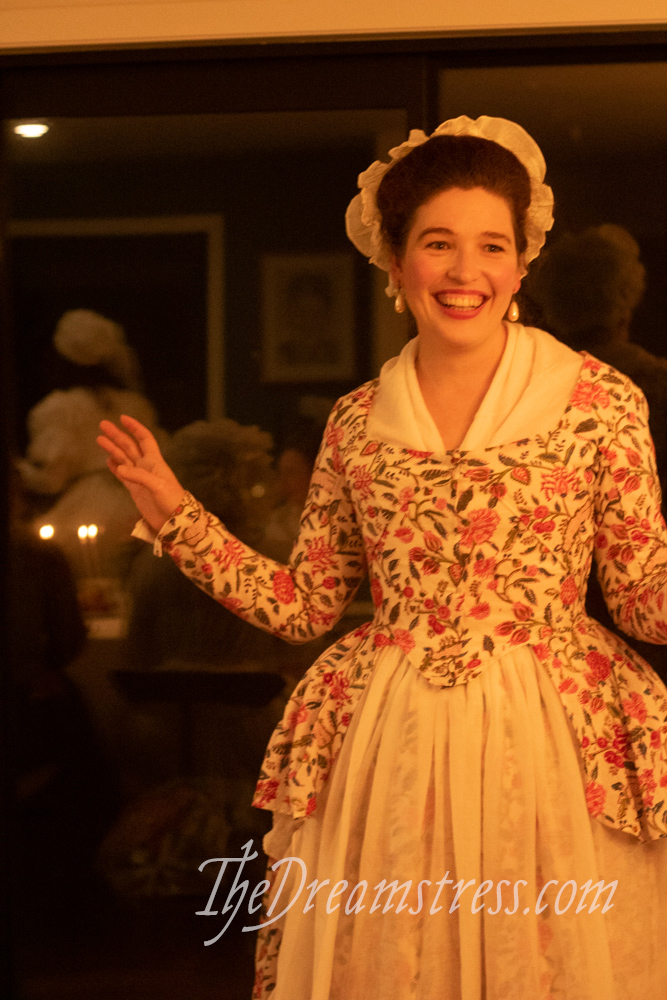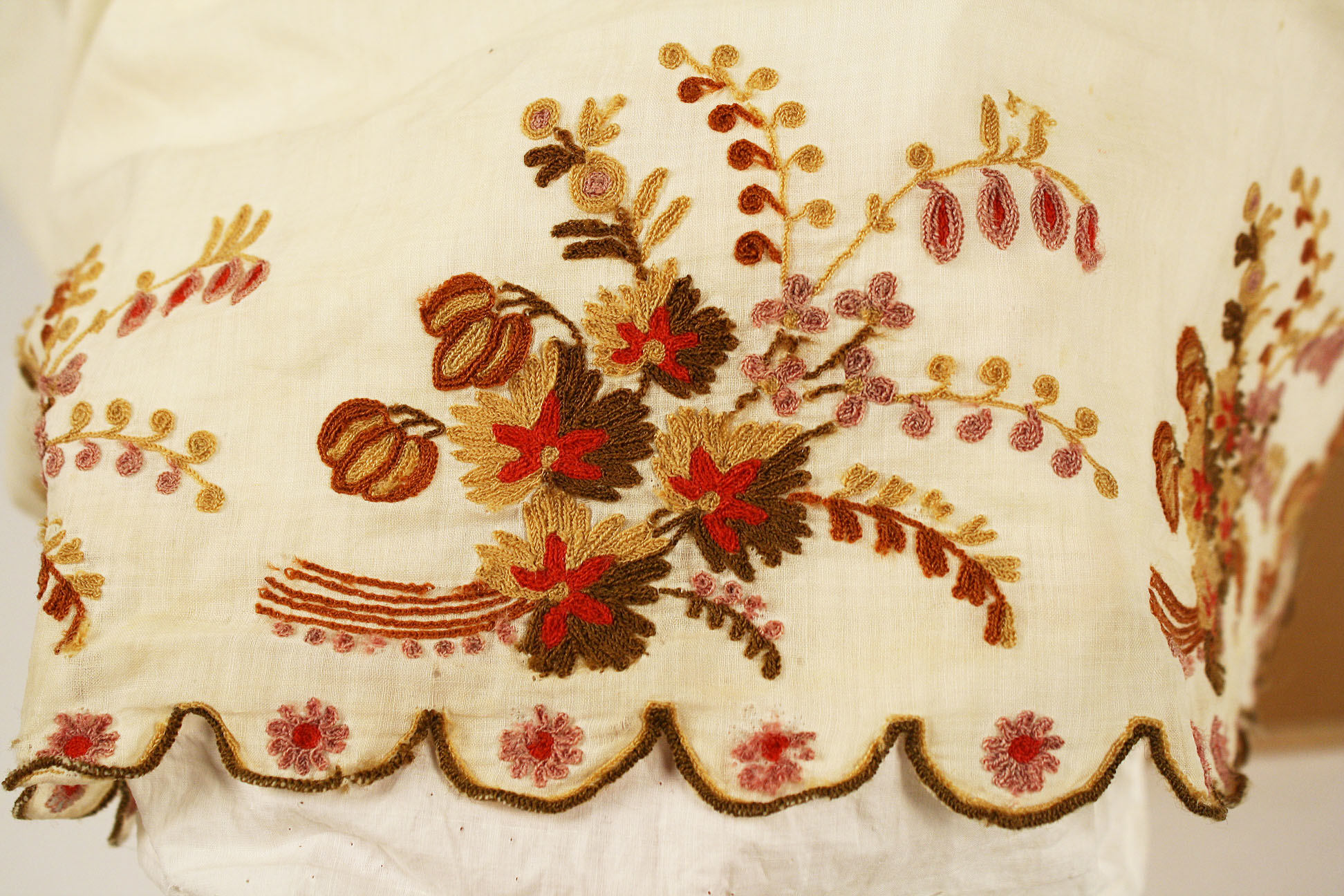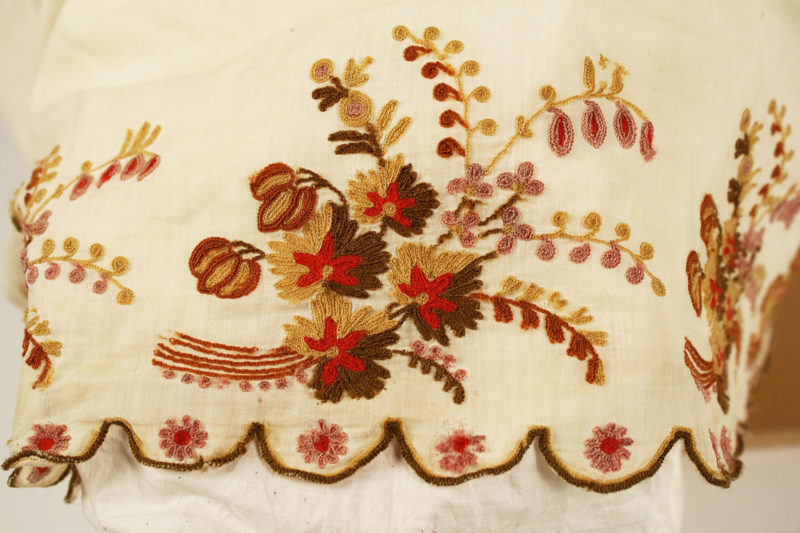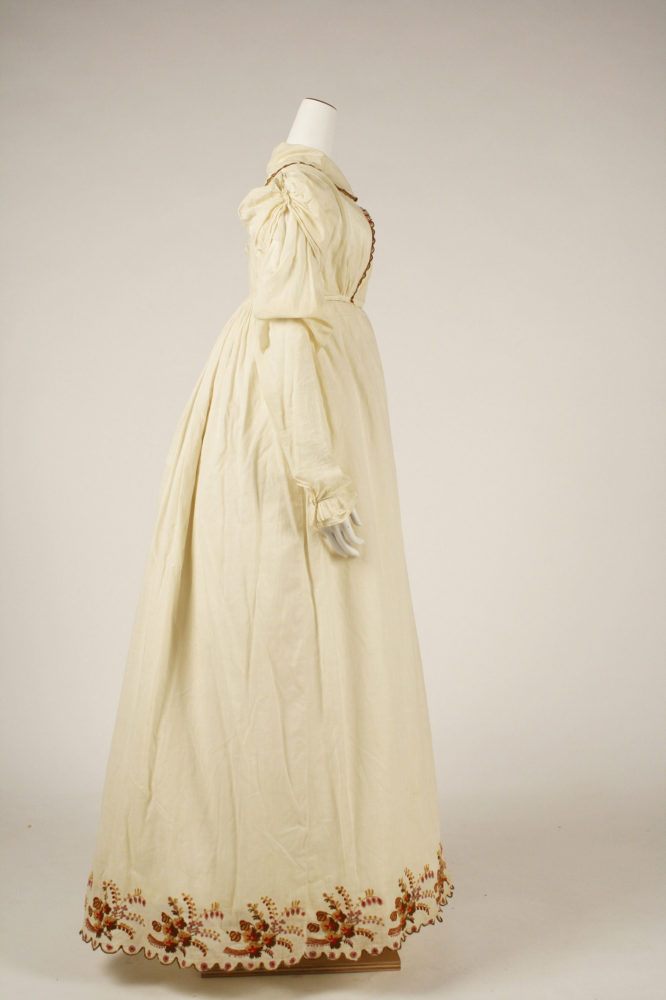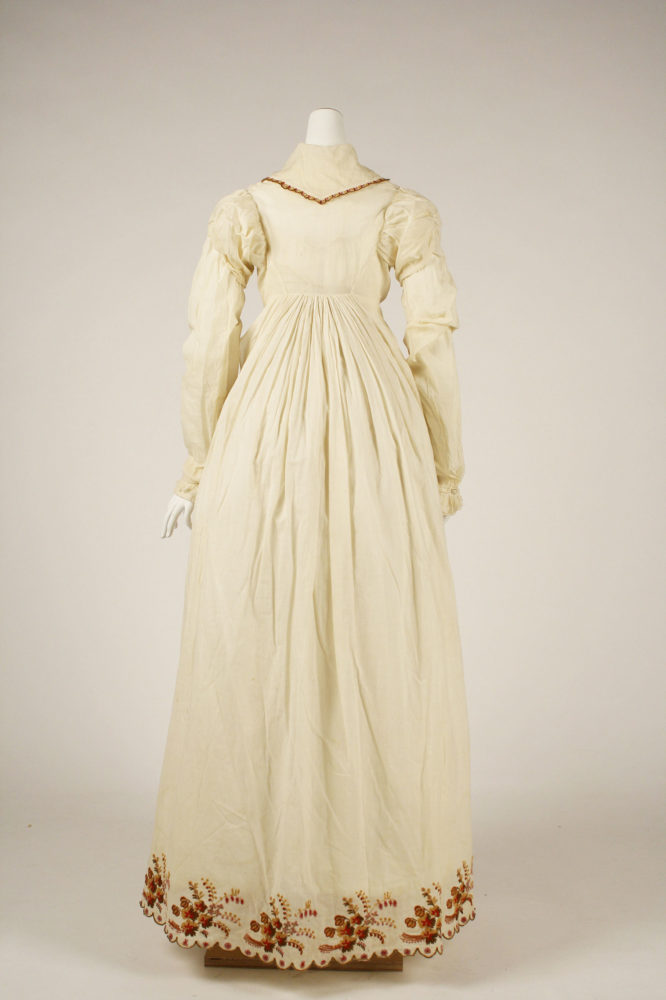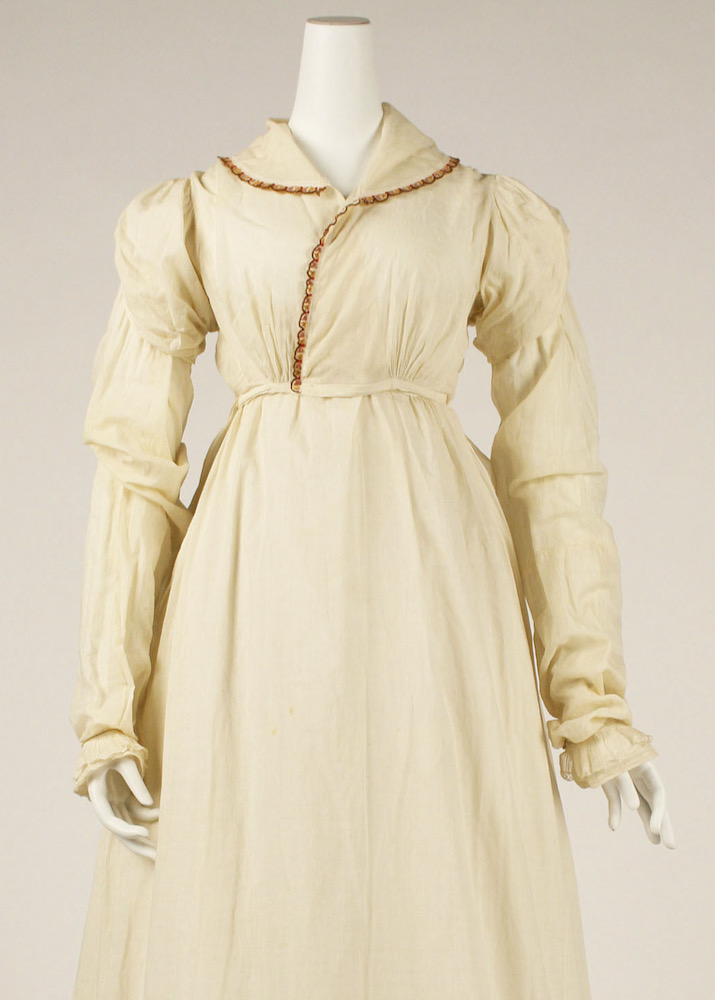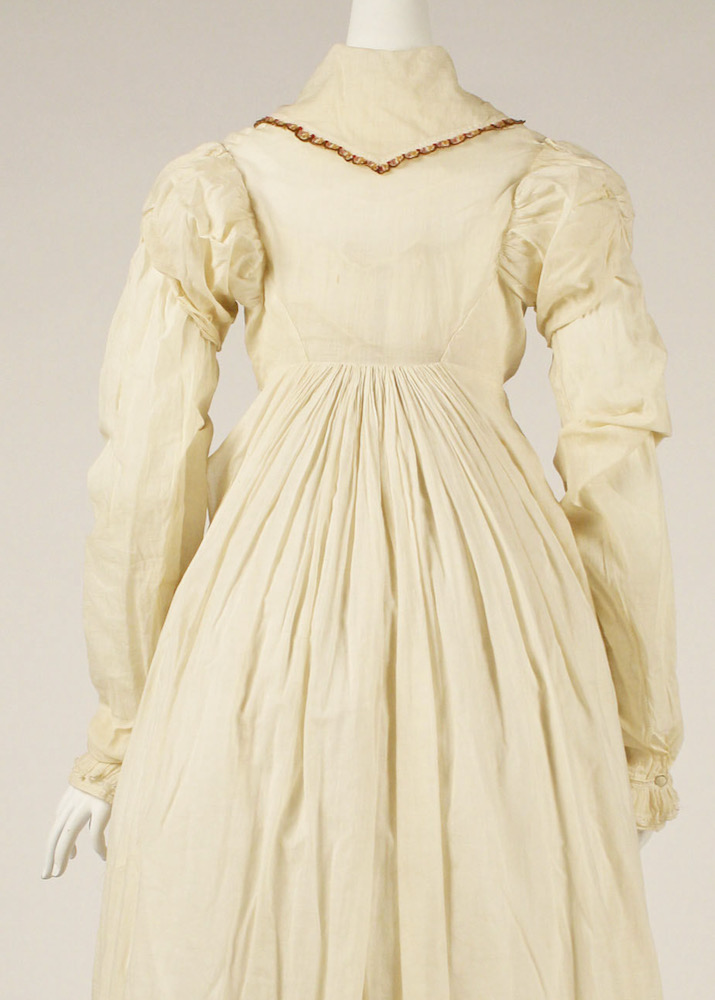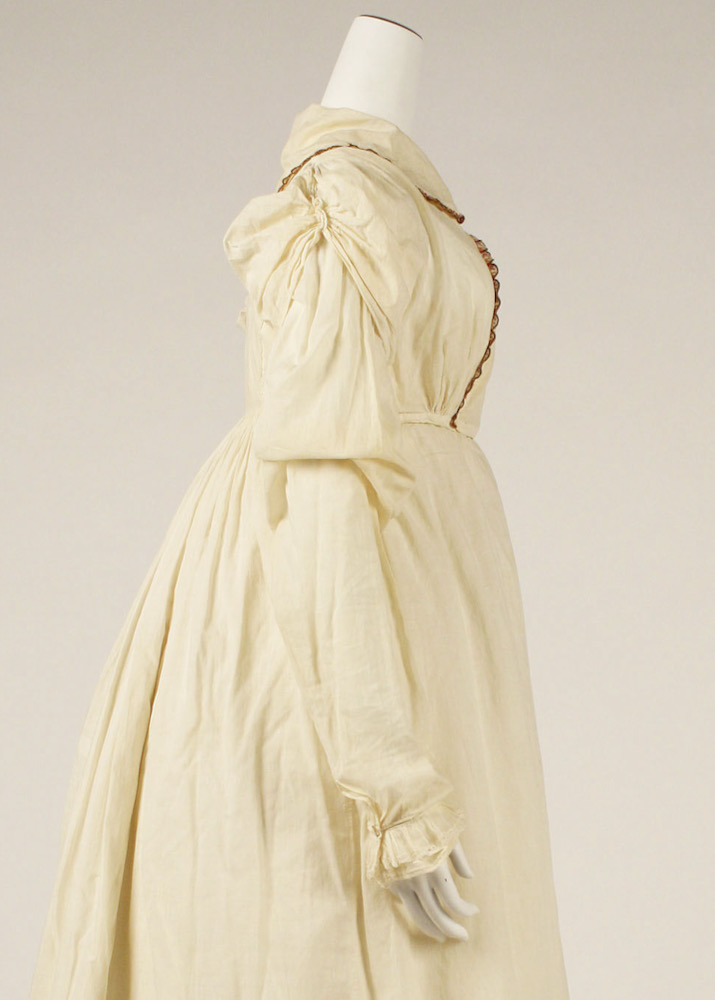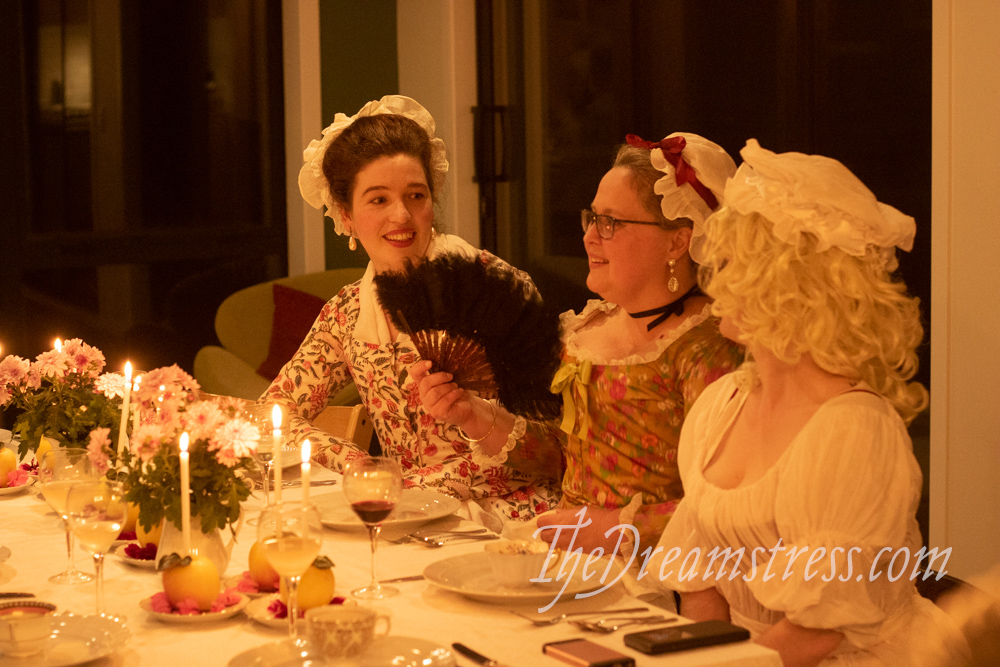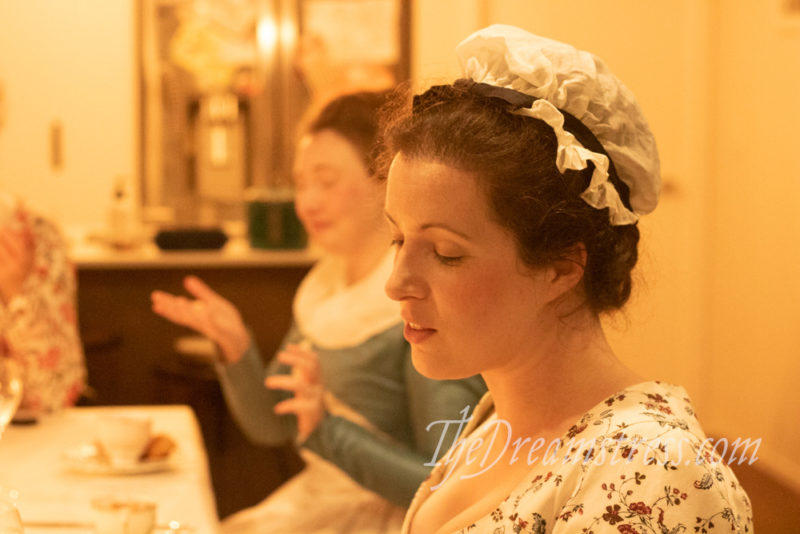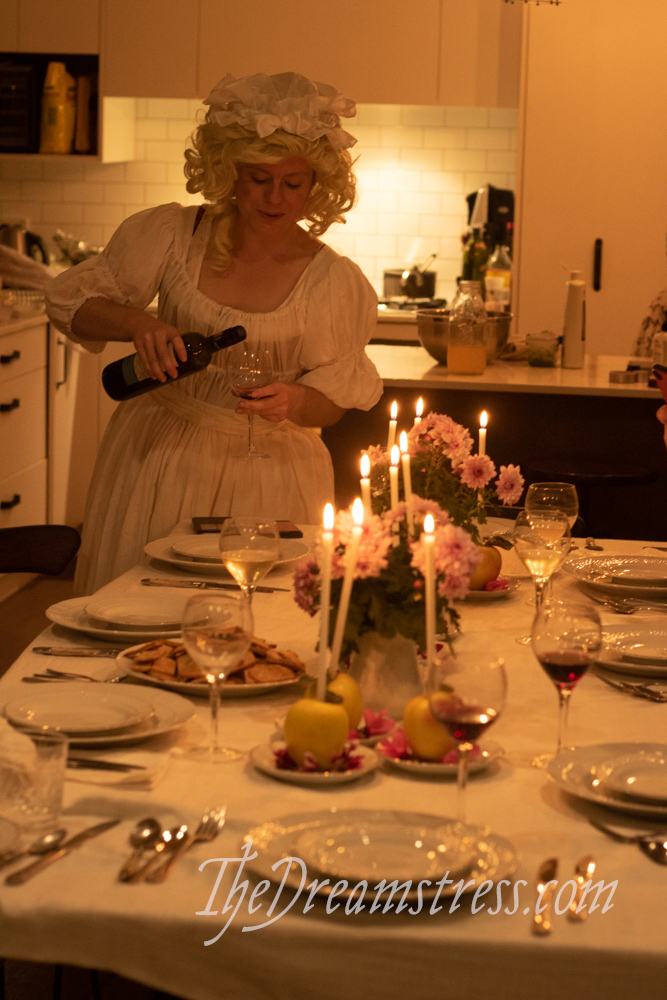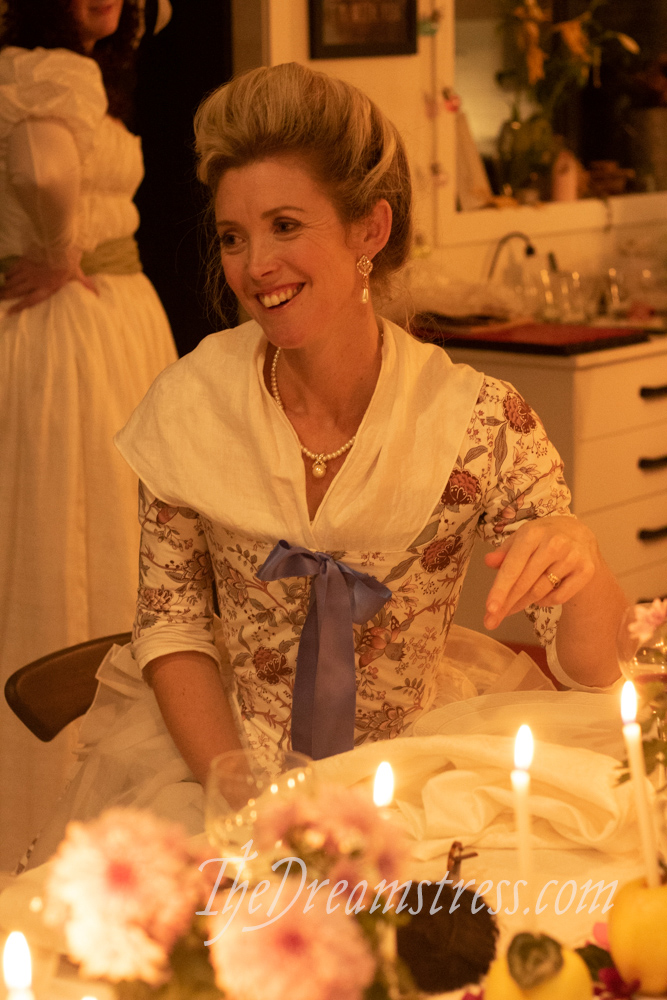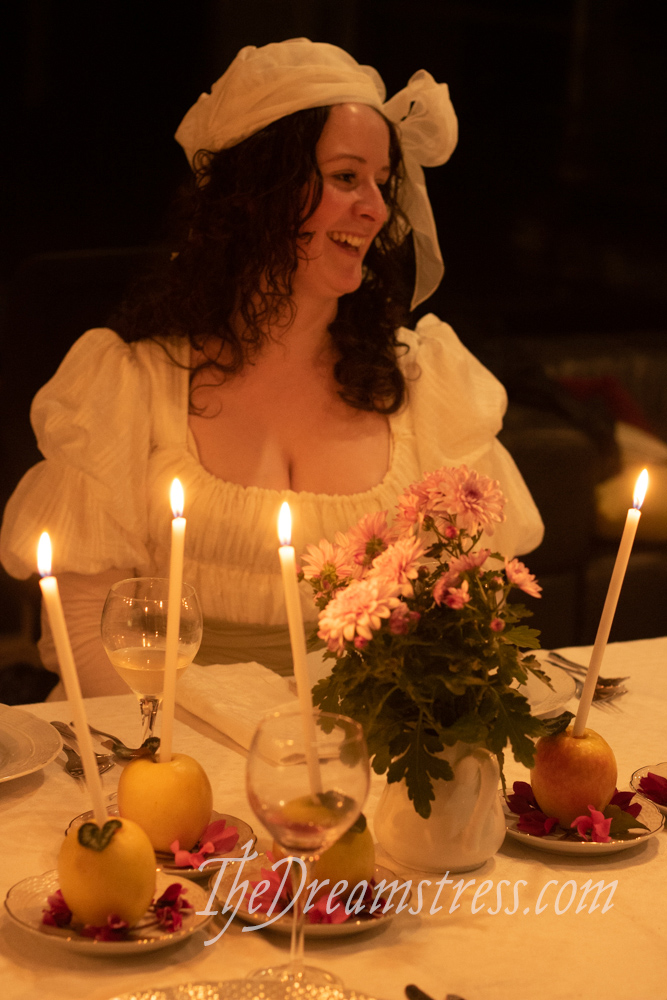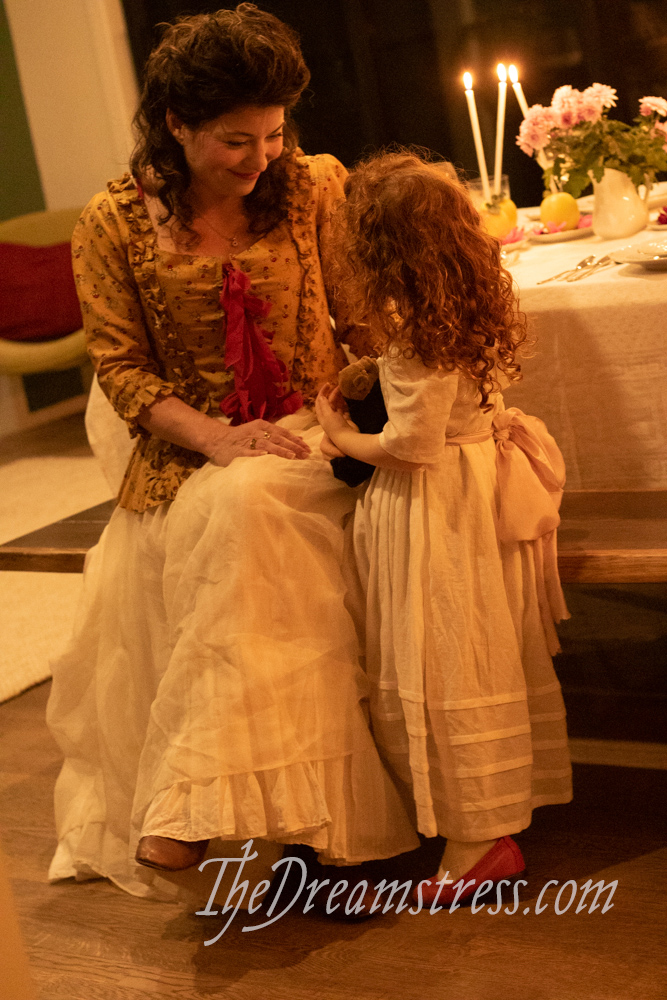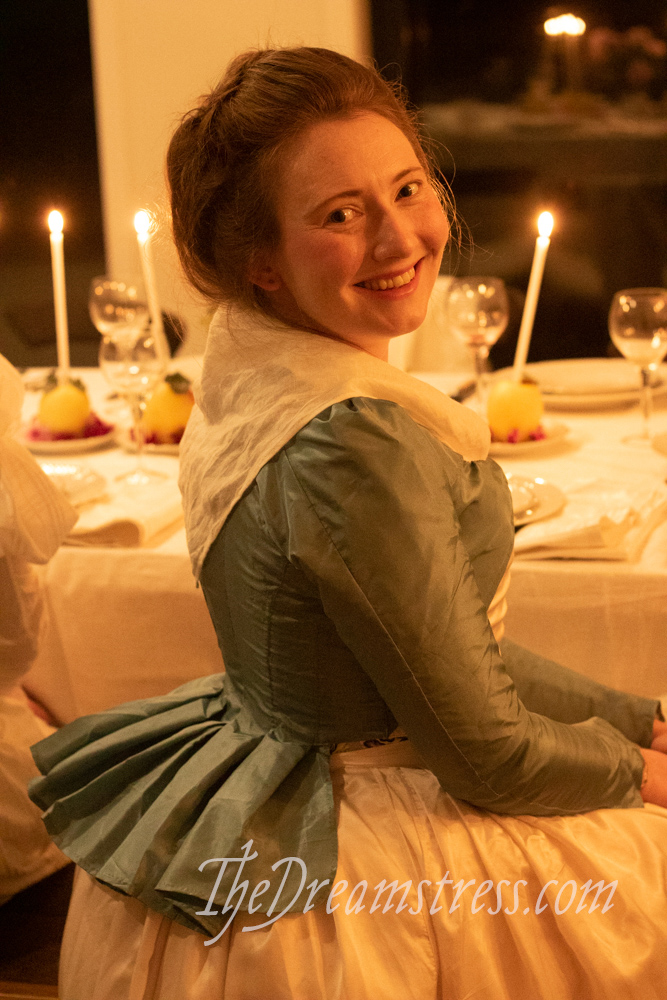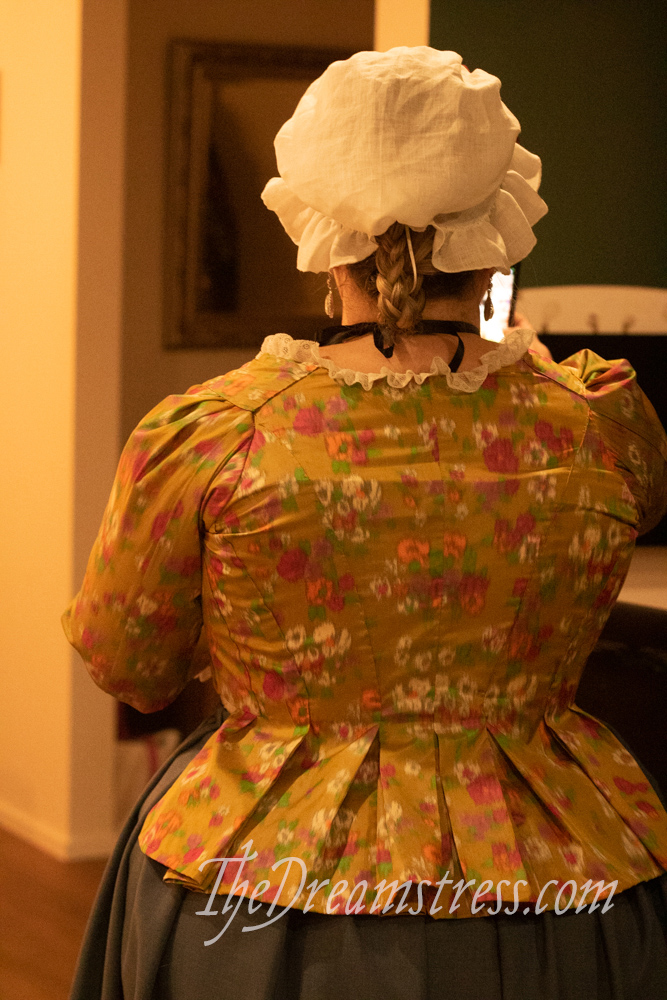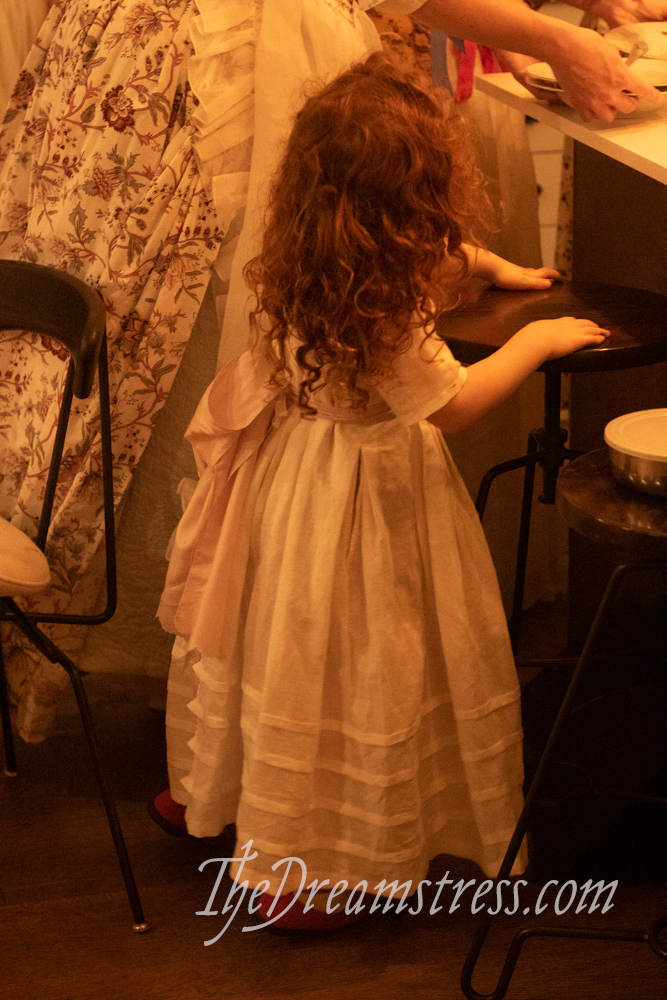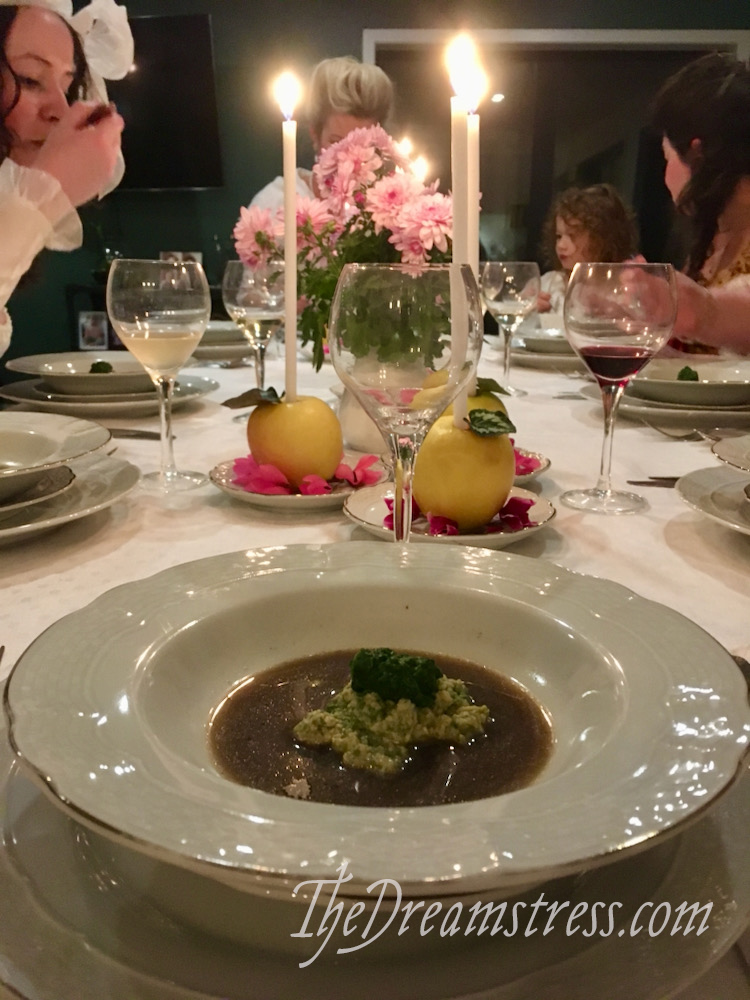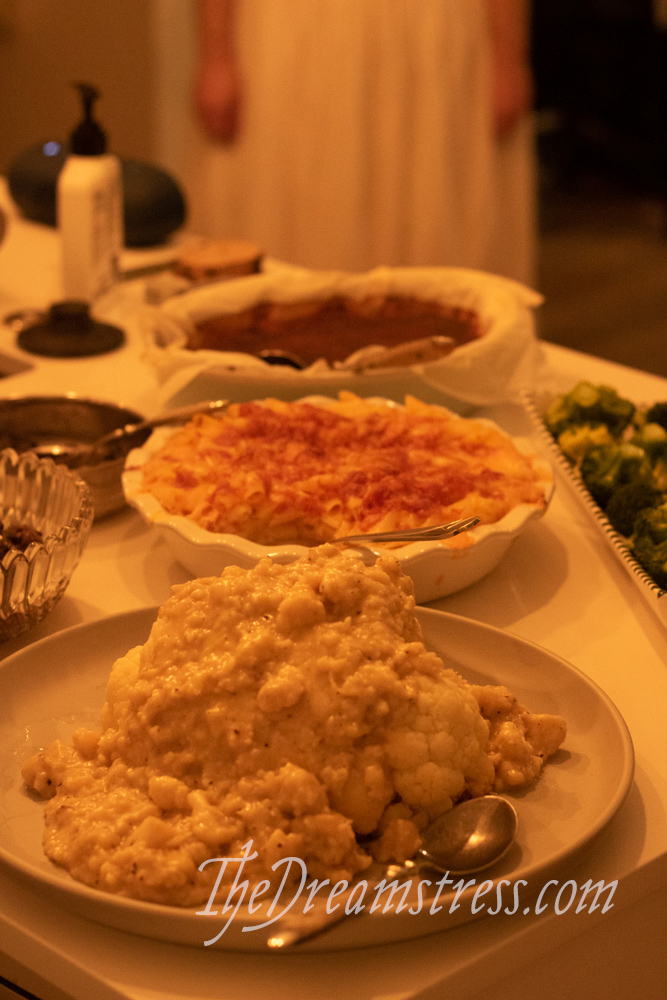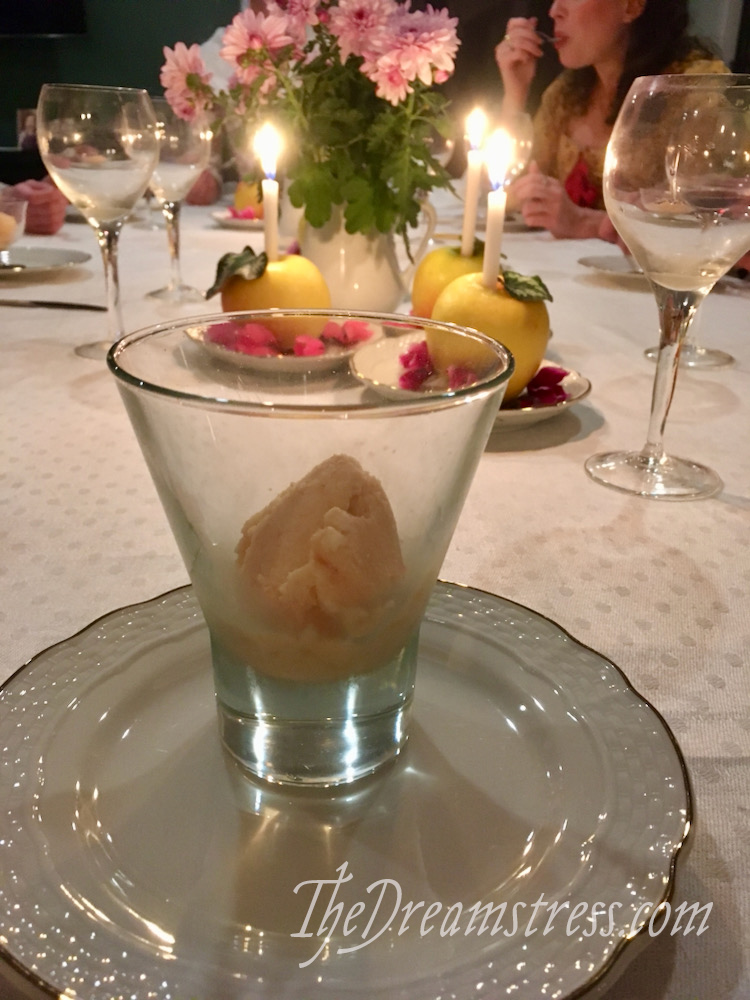Remember the chintz robe I made for Lynne last year? Well, I saved a length of that fabric for myself, to make the most fabulously, floral-y, extremely exuberant Amalia Jacket.
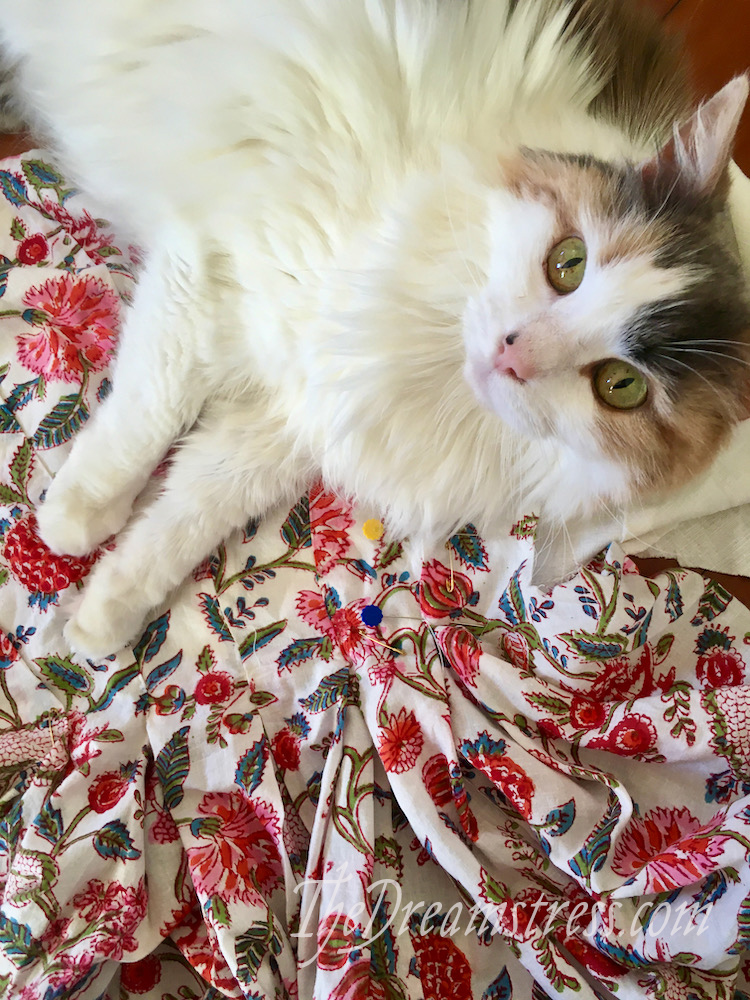
I’ve been plugging away on it all year. It’s been my happy sewing. I love the fabric. The cotton and linen are so easy and fun to work with. It’s really nice to make something without a deadline, and to just work on it when the mood strikes you. It’s not a fast process, but it’s so satisfying. And I’m still so delighted with the Amalia Jacket pattern!
Here’s a look at the making process.
I started with the lining, and then added the back panels, building out from the center back, and lapping each piece over the other:
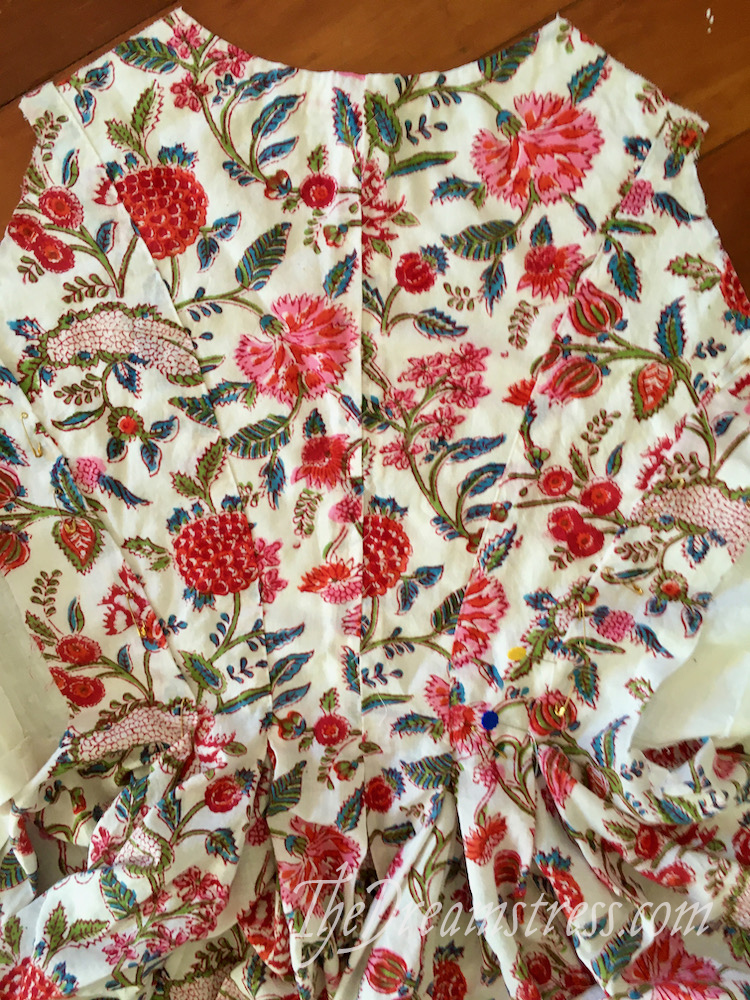
Felicity, in her own special way, made sure that I didn’t go over my daily sewing allotment.
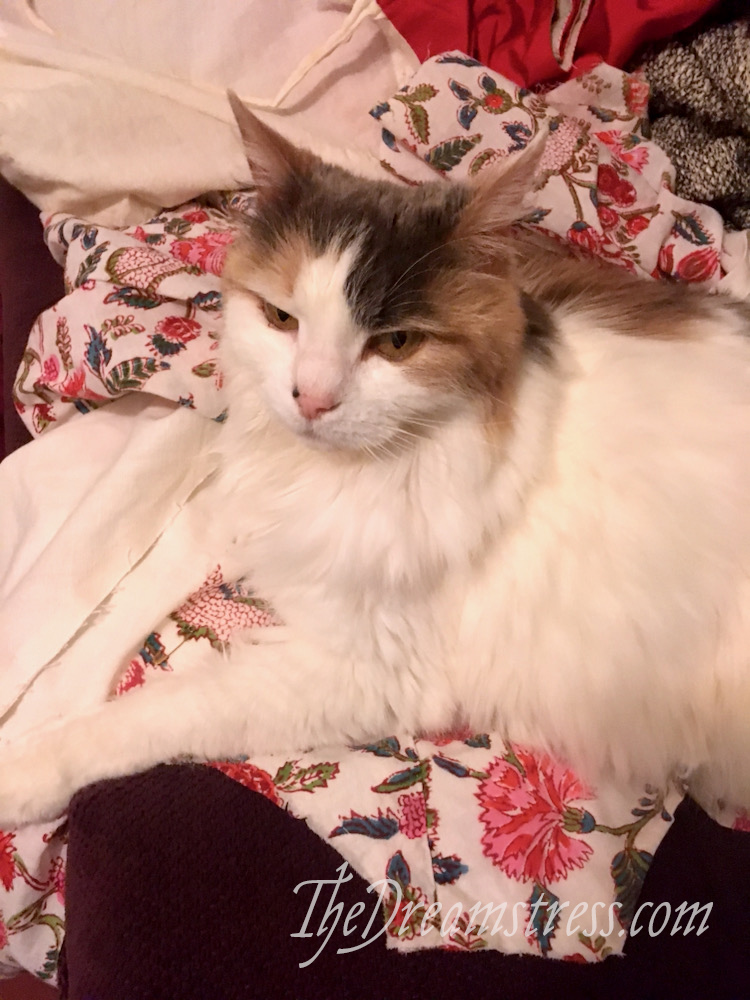
Bodice assembled!
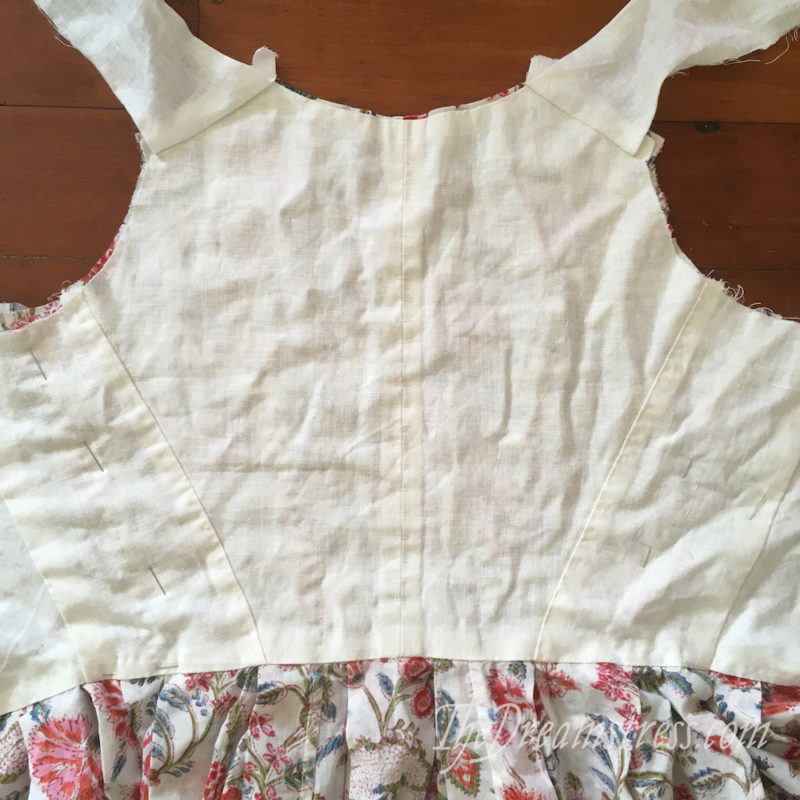
Now, on to the sleeves:
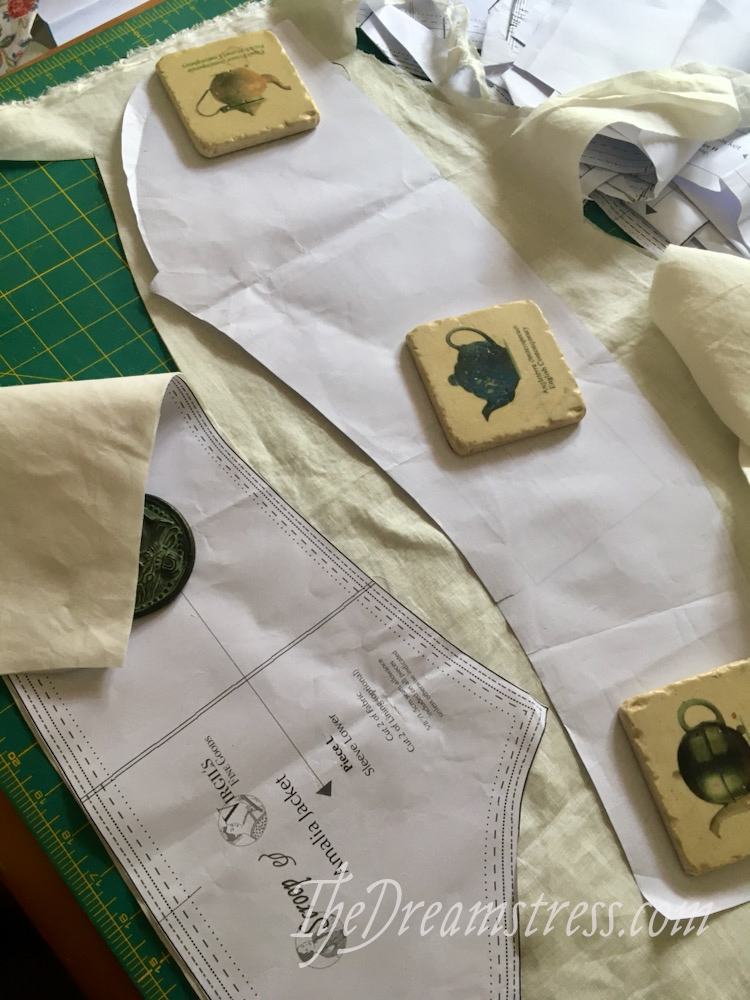
Here’s a little sewing tip. If you need to cut a pattern piece with the pattern wrong side up, fold the pattern piece along the grainline:
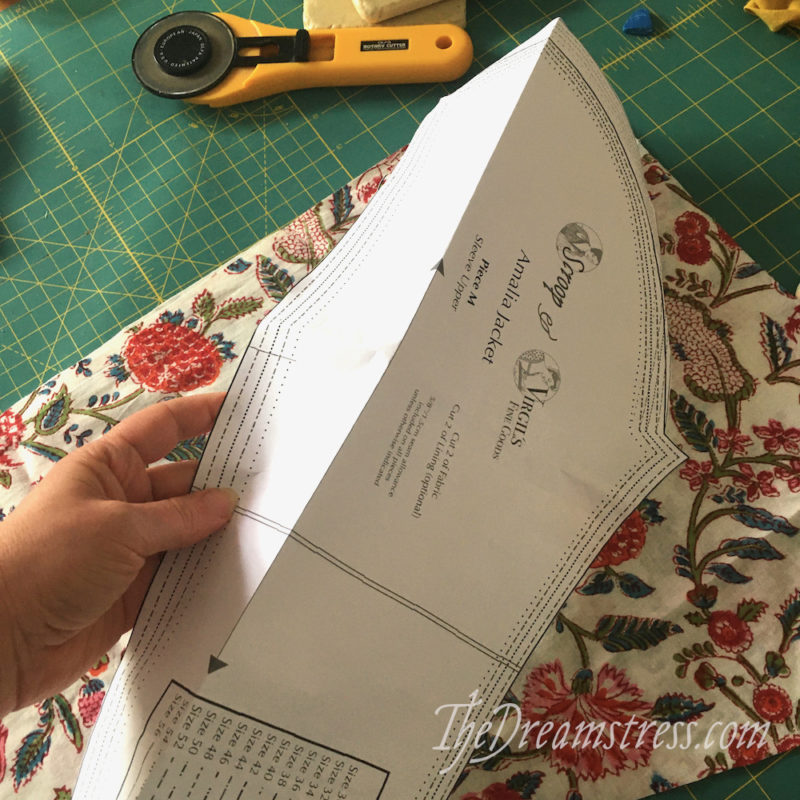
Now it’s easy to see the grainline, and make sure it’s placed properly on the fabric!

I loooooove sewing 18th c sleeves. The assembly technique is so clever.
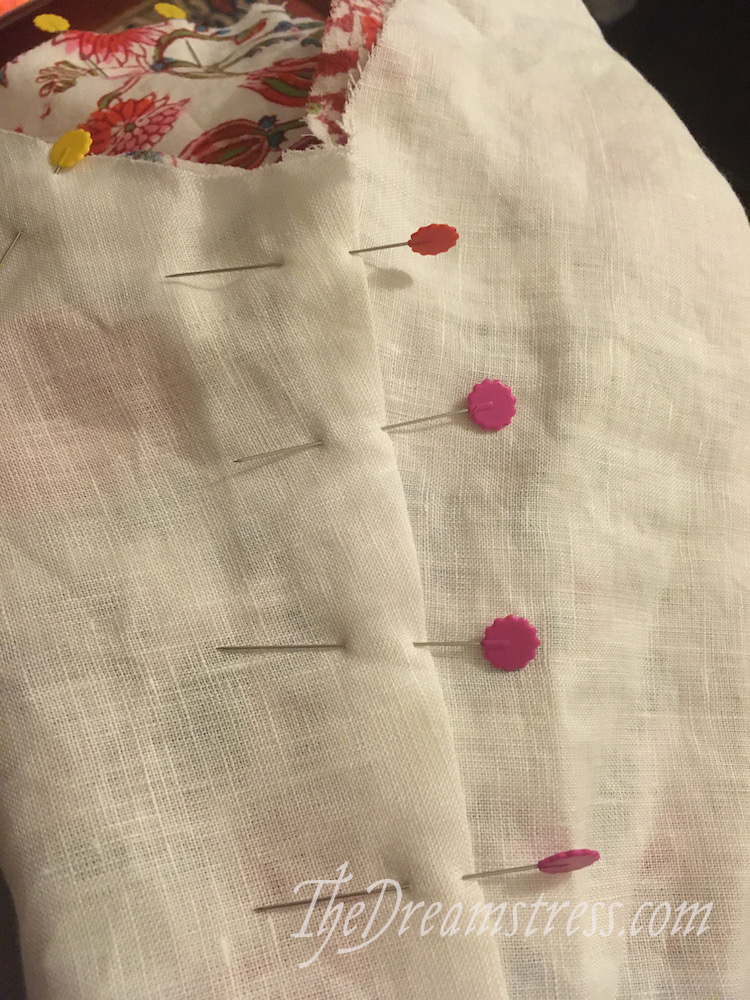
And involves whipstitching! I could whipstitch all day long…
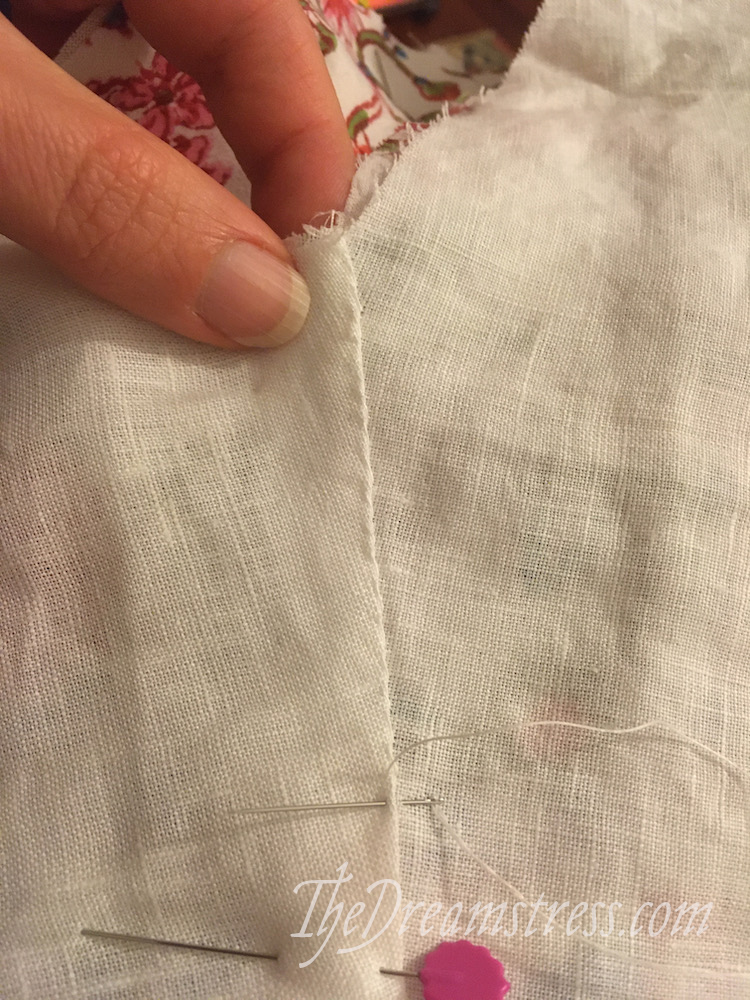
Then it was on to the bodice front.
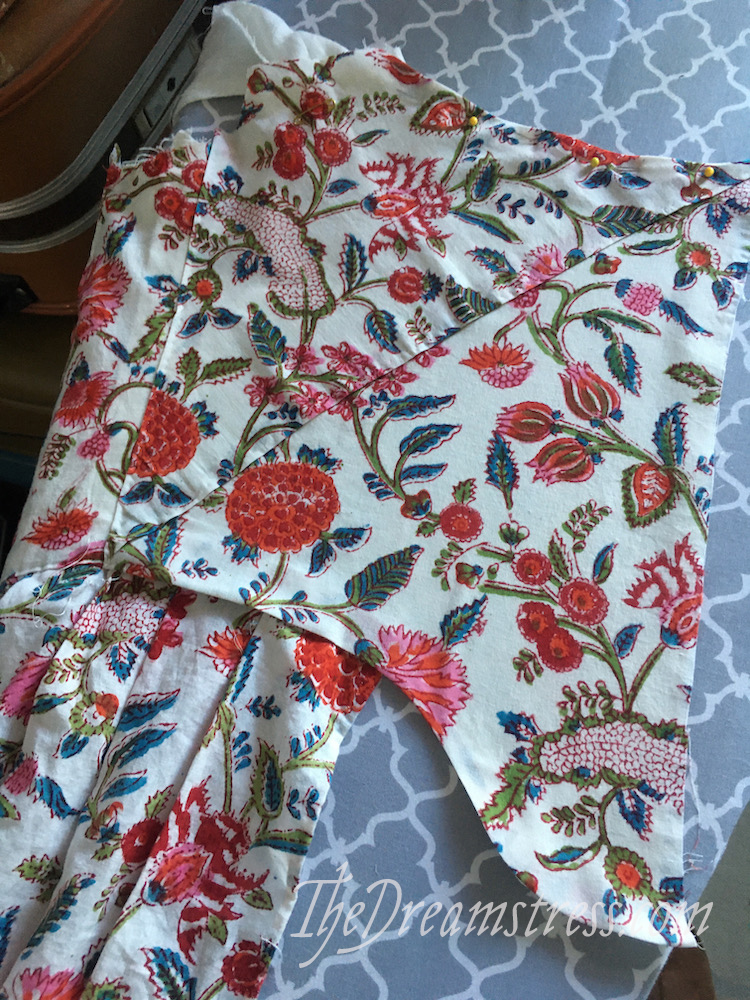
I opted for the cutaway front, even though it’s very subtle in such a bold print, because most of the extant jackets with cutaway fronts are also in chintz.
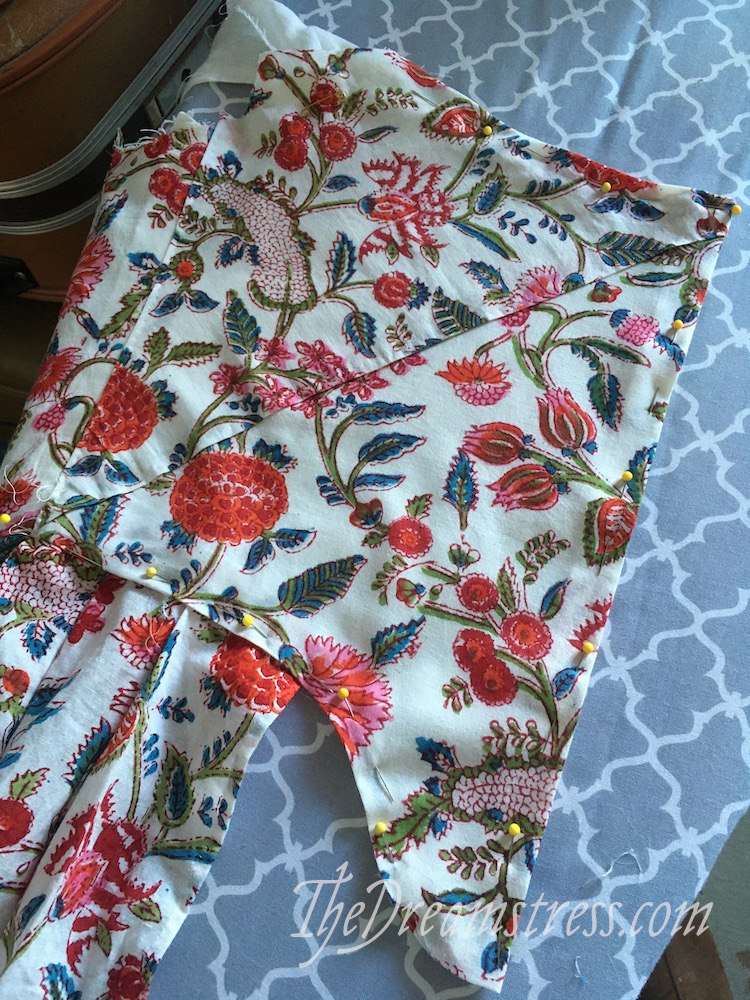
Lots and lots of finishing stitching…
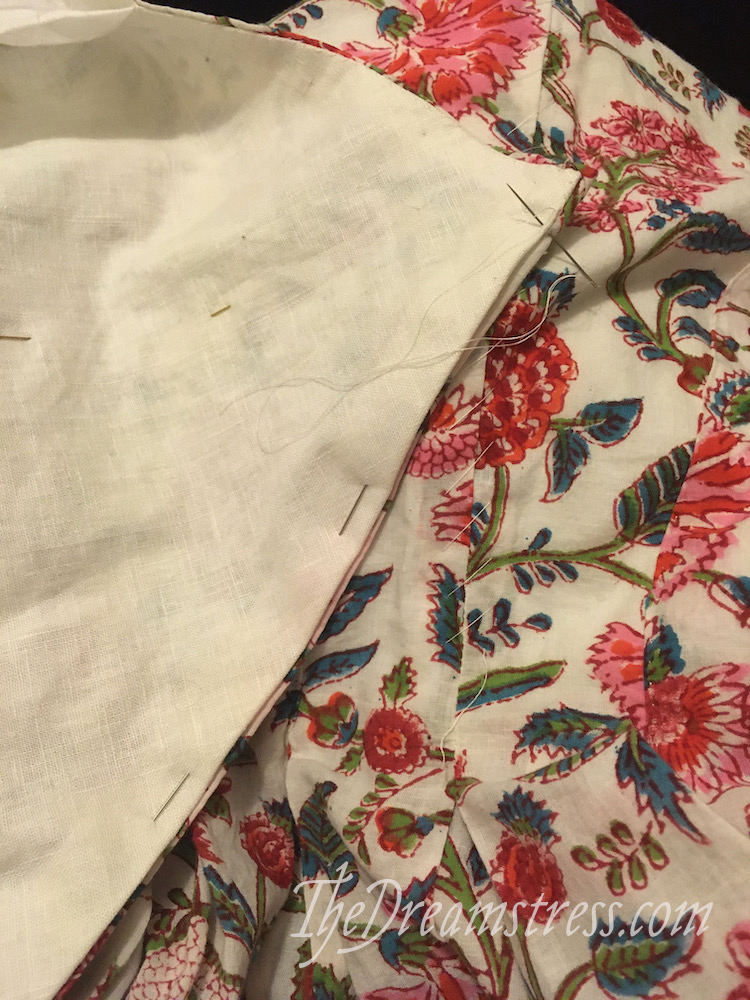
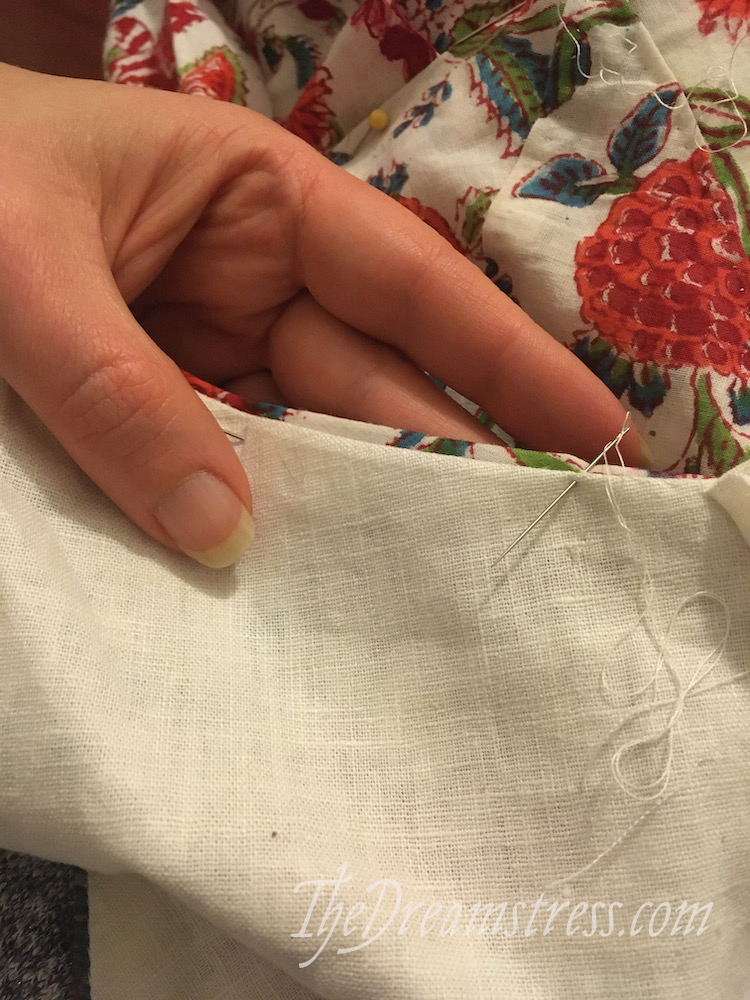
And then a final try-on, and the excitement of sleeve fitting!
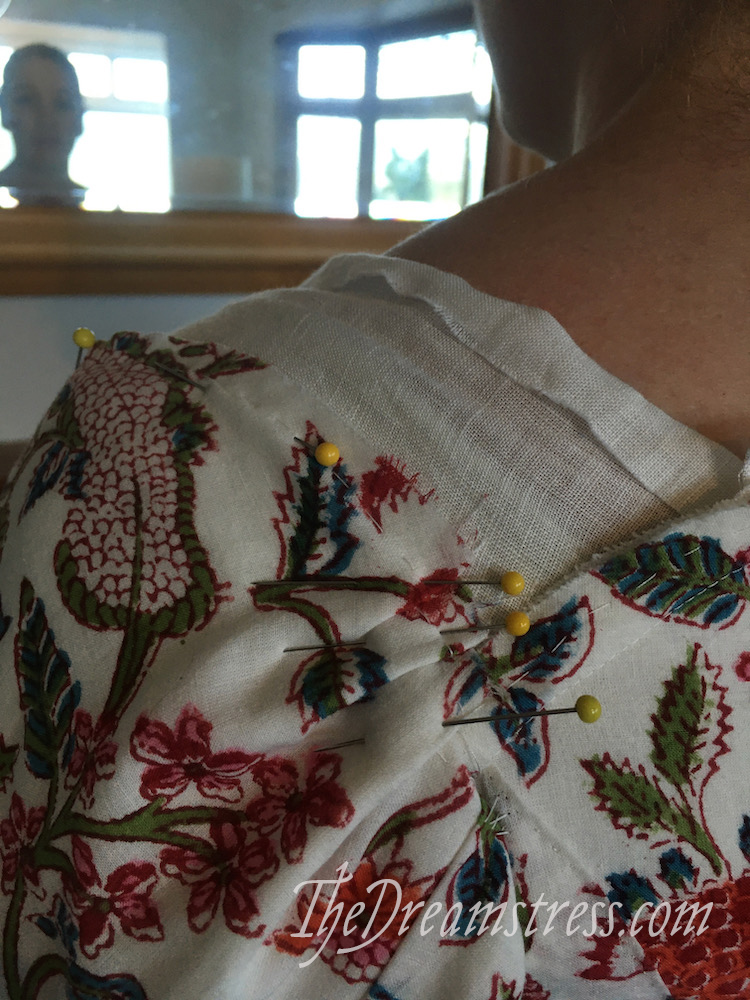
Yesssss…
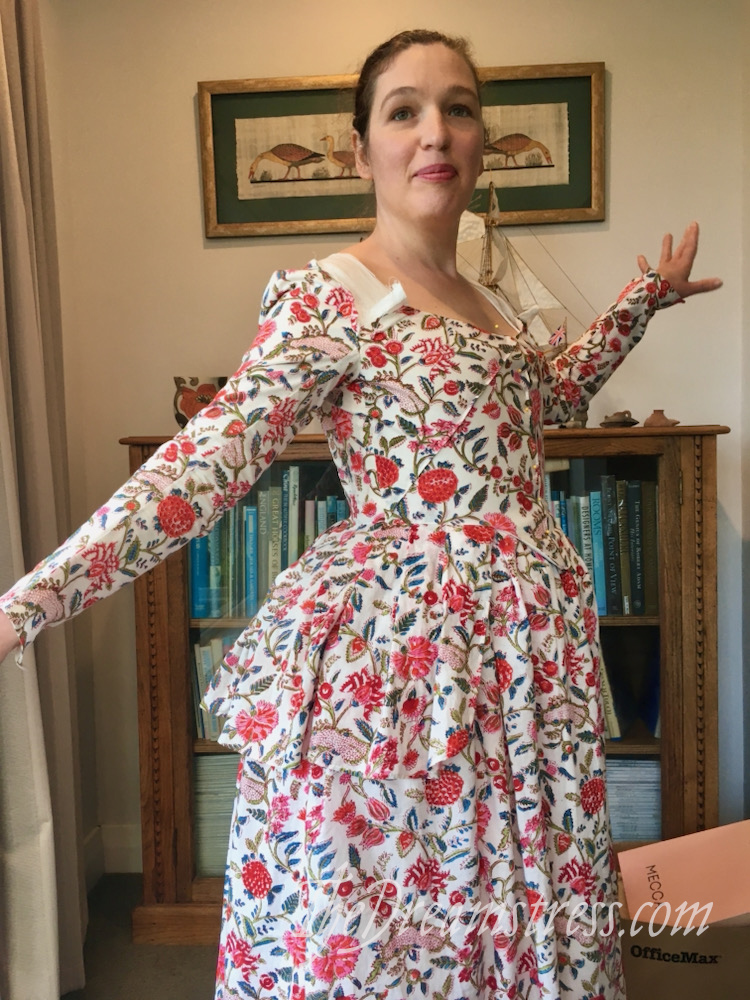
Am I excited about this outfit? Yes I am!

(yes, there’s a matching petticoat!)
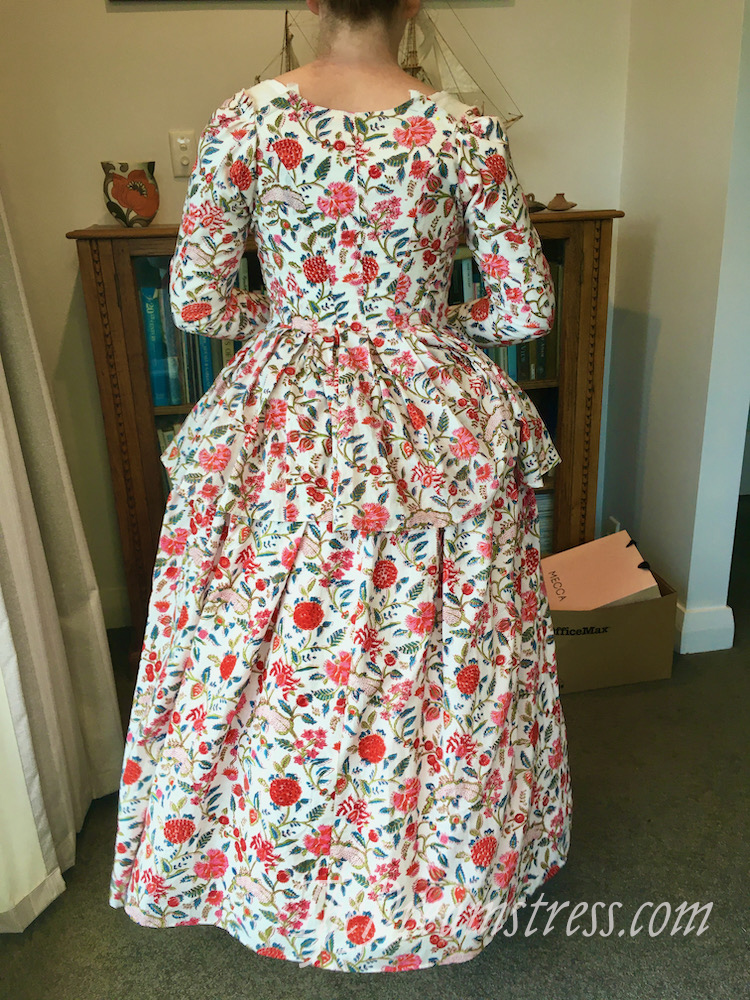
Not exactly a proper pinning job!
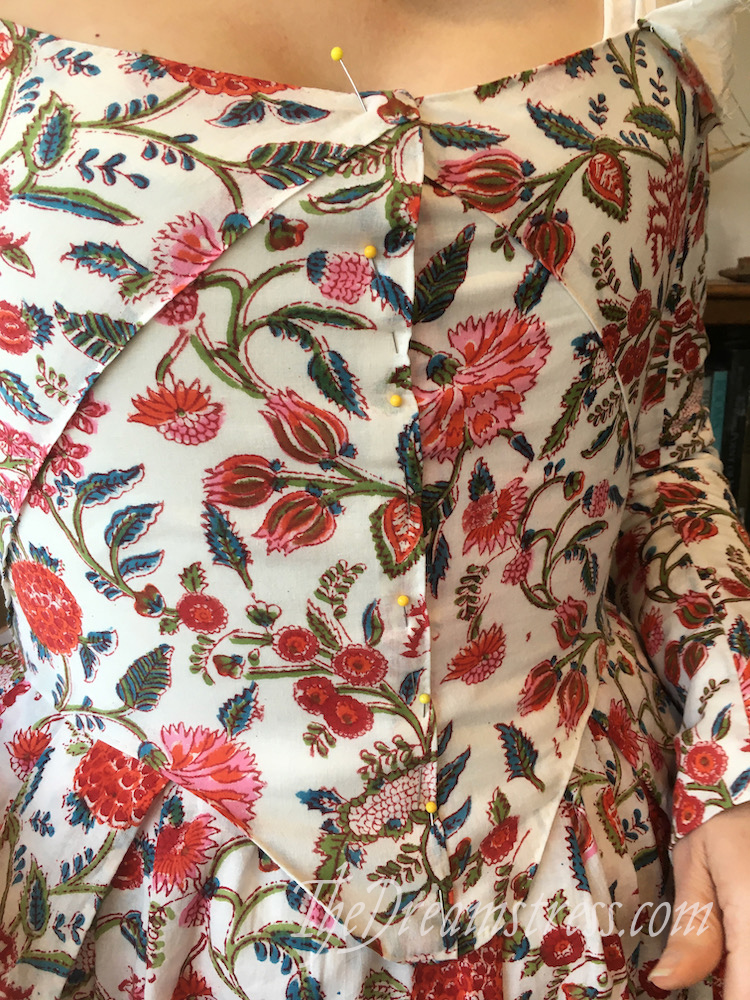
The final outside touch was the chintz straps…
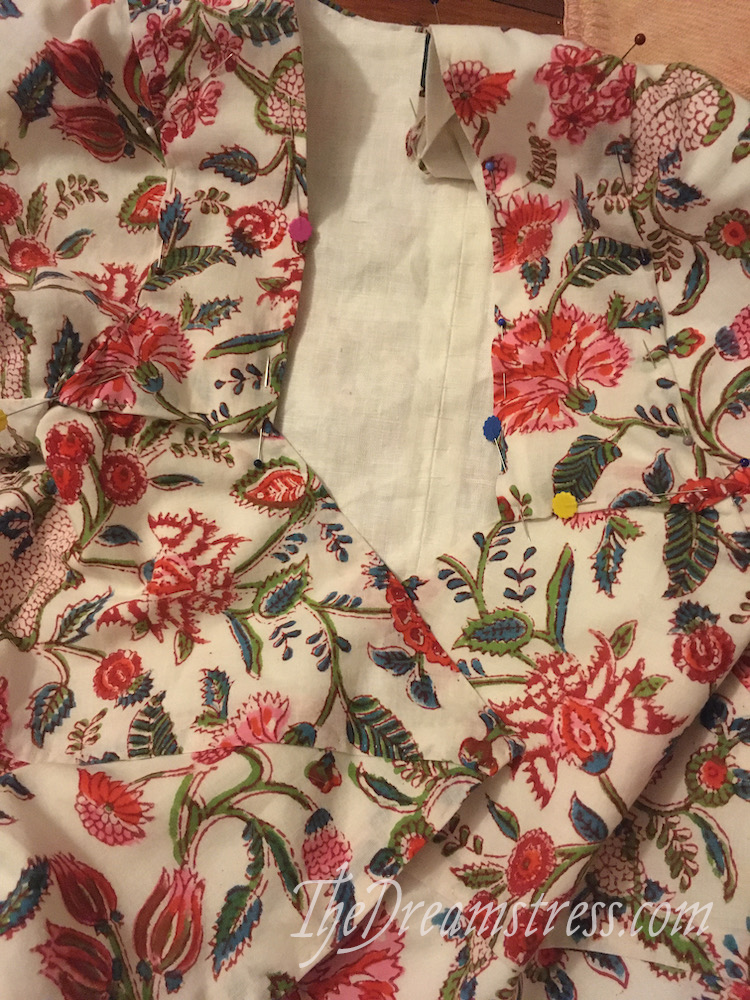
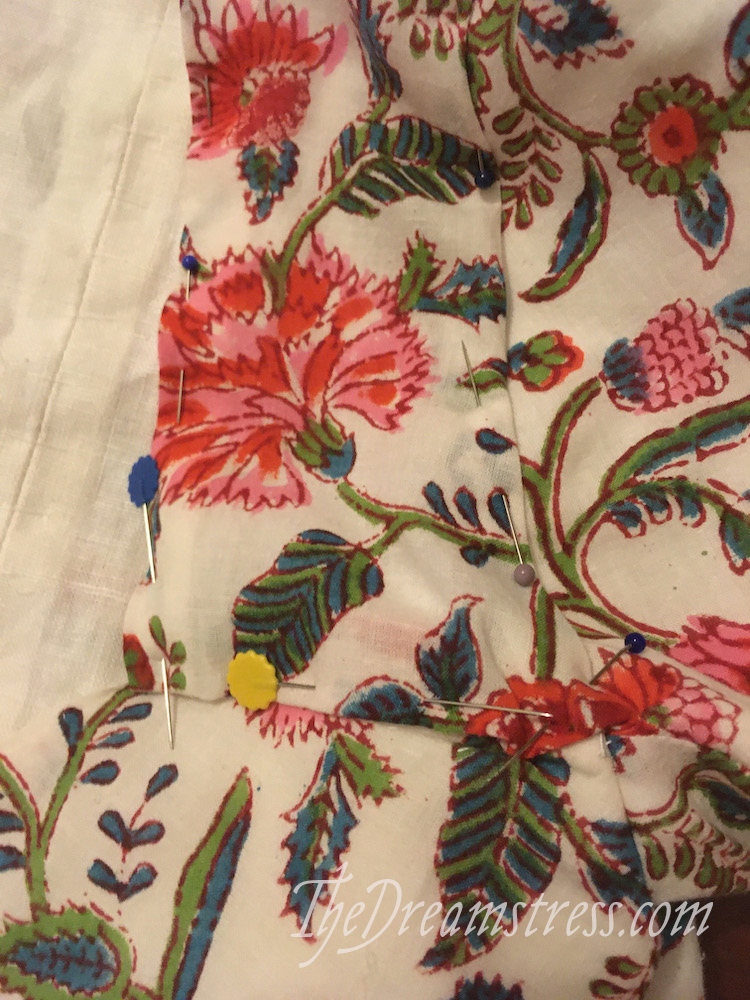
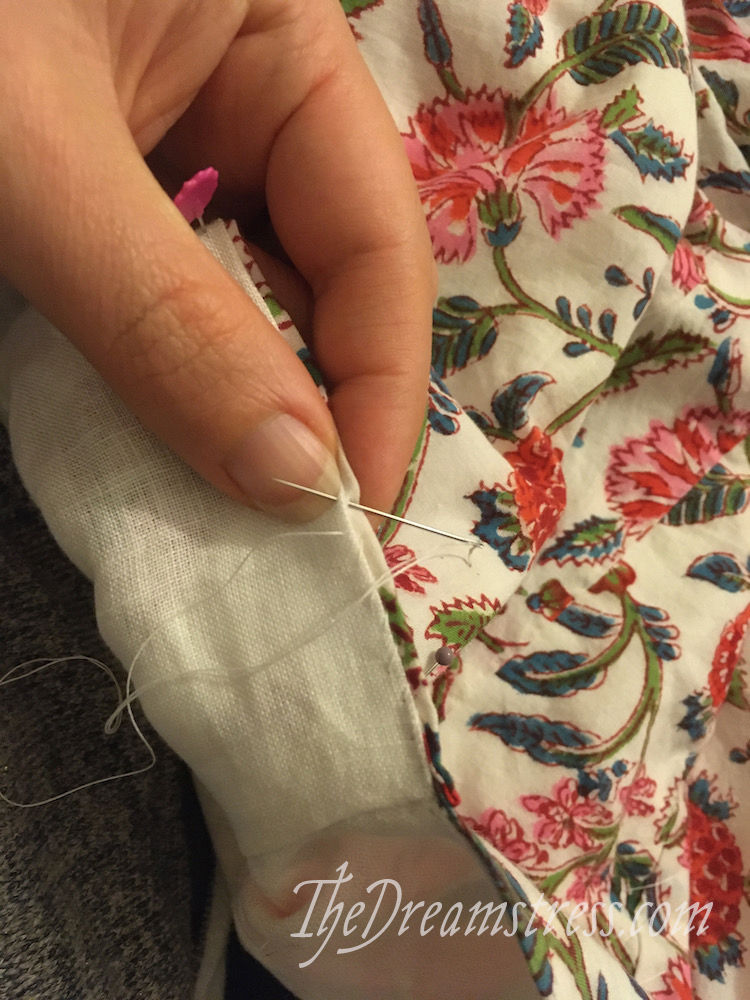
But there was some inside finishing to do. I felt this jacket deserved that!
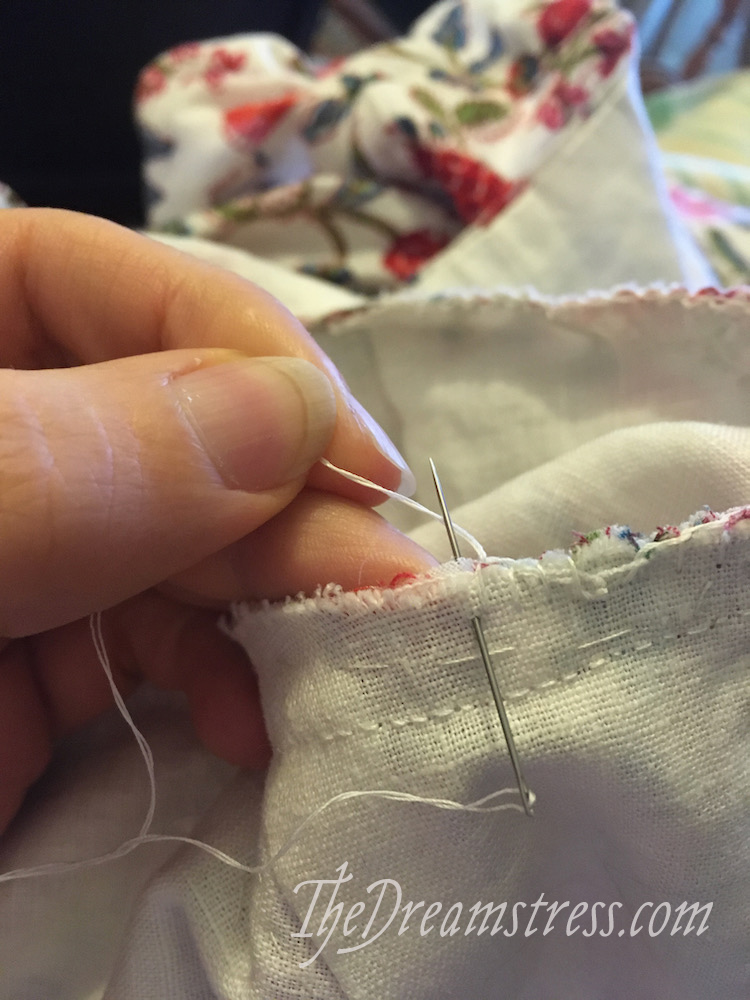
And my Amalia Jacket is finished inside and out!
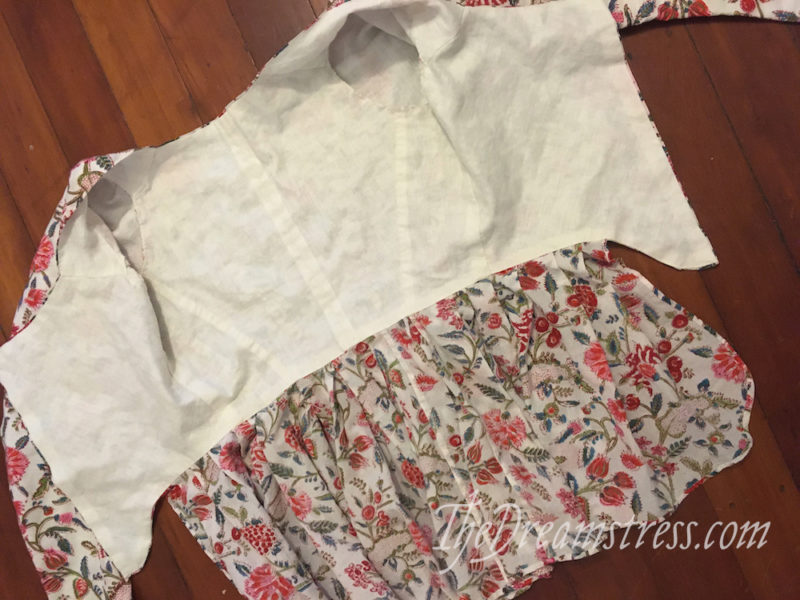
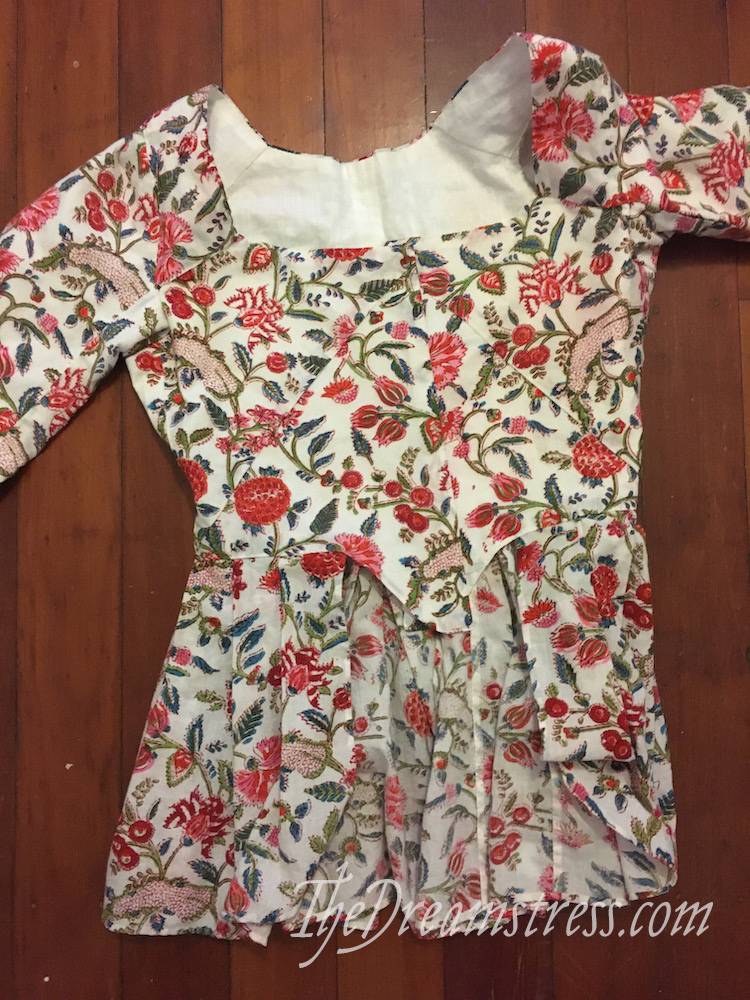

I wore it to the Georgian Dinner, but it’s definitely going to get a lot more outings, and, eventually, so many ruffles! (seriously, so many!)
